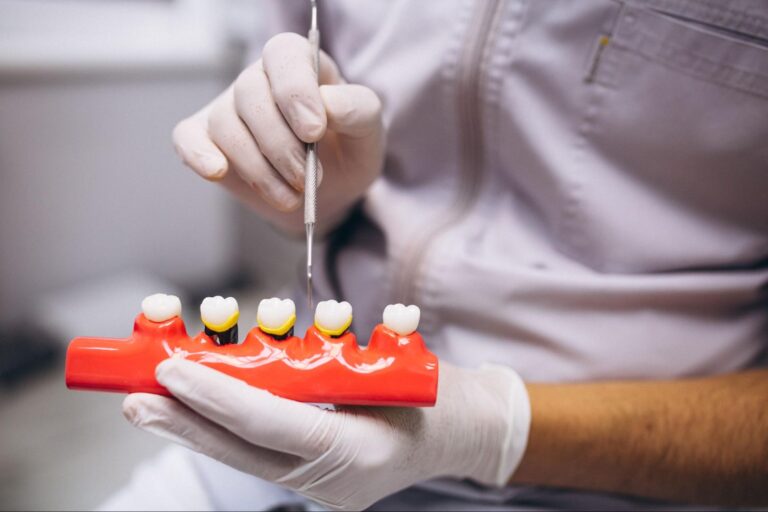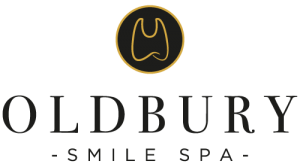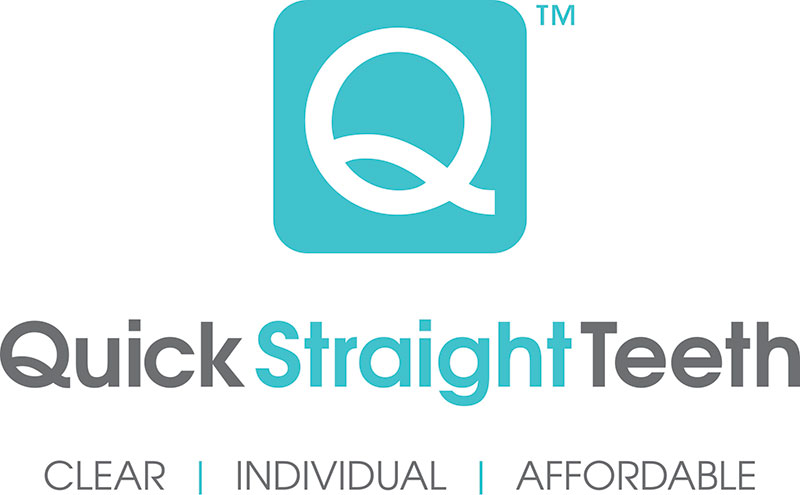What Are Dental Crowns Made Of?
Navigating the maze of dental crown options can be quite a difficult task, especially with the myriad of materials on offer for tooth restoration. Whether it’s to tackle tooth decay or enhance your smile, many people find themselves pondering the best path for dental crowns without a clear starting point.
Our exploration uncovered an intriguing fact: the choice of material in your dental crown doesn’t only affect its aesthetic appeal but also its longevity and comfort.
We’ve immersed ourselves in research to decipher what exactly dental crowns are composed of, contrasting various materials from ceramic and metal alloy crowns to those made from porcelain.

This blog aims to shed light on the realm of dental crown materials for you, simplifying the decision-making process to find that perfect fit that aligns with both your practical needs and visual preferences.
Key Takeaways
- Dental crowns come in different materials, like zirconia, Emax ceramic, PFM (traditional), and metal.
- Zirconia and Emax ceramic crowns offer a good mix of strength and look. They can match your natural teeth’ colour.
- Metal crowns are very strong and great for back teeth. They last a long time, but they don’t look like natural teeth.
- The right crown material depends on where it goes in your mouth, how it will look, and how much it costs.
- Getting a crown that fits well is important to keep your tooth healthy underneath.
- Factors to Consider When Choosing Dental Crown Materials
- Consider the strength and durability, as well as the aesthetics and accuracy of the fit, when choosing dental crown materials for your dental procedure. Making an informed decision is crucial to ensuring the longevity and overall success of your dental implants or prosthodontic work.
Strength and durability
We understand the importance of crown durability in dental procedures. The strength and longevity of a dental crown are critical factors in ensuring that it withstands the daily demands of biting, chewing, and general wear and tear.
Different materials offer varying levels of strength and endurance. Metal crowns, for example, are highly durable and can last many years with proper care. They’re an excellent choice for back teeth, where the force from chewing is greatest.
Ceramic crowns also provide strong resistance against wear while offering a look similar to natural tooth enamel. Emax ceramic crowns are known for their robustness as well as aesthetic appeal, making them a preferred option for front tooth restoration.
Zirconia combines the best features by offering exceptional durability alongside a natural appearance, making it suitable for both front and back tooth placements.
The right material selection can significantly impact the lifespan of your dental crown.
Aesthetics
When it comes to aesthetics, dental crown materials like Emax ceramic and porcelain can mimic the natural appearance of teeth, providing a lifelike and aesthetically pleasing result.
The choice of material is crucial for achieving a natural look that blends seamlessly with your existing teeth, ensuring a confident smile. Aesthetics play an important role in enhancing your overall facial appearance and boosting your self-confidence.
Accuracy of fit
When getting a dental crown, accuracy of fit is crucial for long-term success. A well-fitted crown helps prevent bacterial leakage and subsequent decay, ensuring the health of your tooth underneath while maintaining a comfortable bite.
Moreover, it minimises the risk of irritation to the surrounding gum tissue and reduces the chances of chipping or cracking.
Having an accurately fitted dental crown not only enhances oral health but also promotes overall well-being. Now let’s move on to explore popular dental crown materials that can meet these requirements effectively.
Next up is exploring popular dental crown materials that deliver durability and aesthetics while ensuring a precise fit.
Popular Dental Crown Materials
Dental crowns come in various materials, all with their unique strengths and weaknesses. Understanding the differences can help you make an informed decision when it comes to your dental health.
Zirconia
Zirconia dental crowns are known for their exceptional strength and durability, making them a popular choice for back teeth restorations. These crowns are made from zirconium oxide, which is highly resistant to wear and fracture, providing long-term functionality.
Zirconia crowns offer excellent aesthetics too, as they can be customised to match the natural colour of your teeth, ensuring a seamless blend with your smile. Moreover, these crowns are biocompatible, meaning they are well-tolerated by the body and do not trigger allergic reactions.
When comparing different dental crown materials, like zirconia, it’s crucial to consider their durability and aesthetic appeal in line with your specific needs. Zirconia offers an excellent combination of strength and aesthetics that many patients find appealing for their dental restorations.
Biocompatible material
Emax ceramic
Emax ceramic is a popular choice for dental crowns due to its exceptional strength and natural appearance. Made from lithium disilicate, it offers great durability and can withstand the pressures of daily biting and chewing.
Emax ceramic crowns also provide excellent aesthetics, closely resembling the translucency of natural teeth, making them a preferred option for visible areas in the mouth.
When considering dental crown materials, it’s important to understand the benefits of Emax ceramic in terms of both strength and aesthetics. Now let’s explore how PFM (traditional) compares to another popular material choice.
PFM (traditional)
Moving on from Emax ceramic, the next option to consider is PFM (Porcelain-Fused-to-Metal) dental crowns. PFM crowns are a popular choice due to their strength and durability, as well as their natural appearance.
These crowns consist of a metal base covered by a layer of tooth-coloured porcelain, providing both resilience and aesthetics. With good care, PFM crowns can last for many years, making them a reliable option for restoring damaged teeth.
When it comes to dental crown material comparison, PFM crowns stand out for their balance between strength and a natural look. Their composition allows for accurate fit and long-term performance while maintaining an aesthetically pleasing result.
For potential dental patients considering options like zirconia or Emax ceramic, understanding the benefits of PFM crowns can help make informed decisions when seeking more than just tailored oral care solutions.
Metal
Metal dental crowns are known for their strength and durability. They are often used on back teeth that require extra support for chewing. Metal crowns, usually made of gold alloy or other base metal alloys, are highly durable and can withstand biting forces well.
While they may not be as aesthetically pleasing as tooth-coloured options, they are a popular choice due to their longevity and ability to withstand heavy chewing forces.
When considering metal dental crowns, it is important to understand that they offer excellent strength and durability at a competitive cost compared to other materials. This makes them a practical option, especially for molars or areas where aesthetics may be less important than functionality.
Metal dental crown composition is one area where the use of strong materials underpins its impressive strength and longevity in the ever-evolving realm of dental materials.
Conclusion
When choosing dental crown materials, factors like strength, durability, aesthetics, and fit are crucial. Popular options include zirconia, Emax ceramic, PFM (traditional), and metal crowns.











